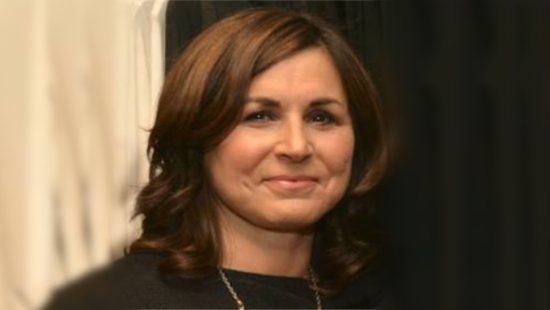 Diana T. Chingos started her work as a cancer patient advocate, helping newly diagnosed cancer patients with treatment and research participation decision-making, following a cancer diagnosis of her own. She co-created and led a patient and family advisory council at the University of Southern California Cancer Center called the Cancer Survivorship Advisory Council. She has also served on the California Breast Cancer Research Program’s Council, and she continues to engage with researchers at USC, City of Hope, Kaiser and the University of California, San Diego, to provide the patient’s perspective on the design and conduct of research.
Diana T. Chingos started her work as a cancer patient advocate, helping newly diagnosed cancer patients with treatment and research participation decision-making, following a cancer diagnosis of her own. She co-created and led a patient and family advisory council at the University of Southern California Cancer Center called the Cancer Survivorship Advisory Council. She has also served on the California Breast Cancer Research Program’s Council, and she continues to engage with researchers at USC, City of Hope, Kaiser and the University of California, San Diego, to provide the patient’s perspective on the design and conduct of research.We sat down with her to discuss the 21st Century Cures Act and its promise for cancer patients and research.
We understand that the 21st Century Cures Act allocates $1.8 billion in funding for cancer research, as well as initiatives to speed the drug approval process by FDA. In your opinion as a cancer survivor and patient advocate, what is the significance of the act?
The 21st Cures Act is a sweeping bill with many moving parts, both prized and controversial. With its recent passage in December 2016, how it will be implemented remains to be seen.
As a cancer survivor and advocate for people with cancer, I value the funding of cancer research, especially focused funding for translational research, known as bench to bedside. Cancer and other biomedical research funding at the National Institutes of Health (NIH) has been level for some time. The Federation of American Societies for Experimental Biology (FASEB) sets the hit taken by NIH, from 2003 to 2015 – due to budget cuts, sequestration and inflation – at 22 percent.
The Act will fuel the Moonshot Initiative with an injection of $1.8 billion to make its cancer research goals a reality. An additional $4.8 billion to the NIH will fund the precision medicine initiative, and the U.S. Food and Drug Administration (FDA) will get more money to speed drug and device development. That’s the good news.
The bad news is that the funding isn’t authorized, will have to be requested each year and is subject to appropriations. Partial funding will come from the sell off of millions of dollars of crude oil from the Strategic Petroleum Reserve. The law could take years to implement and comes without deadlines for specific milestones.
The new administration’s approach to less burdensome regulations could also impact the bill’s implementation and its impact on patients. It’s hard to know what turn it will take, and the extent to which it will honor the original intent of the legislation, even with its broad bipartisan support.
What are the most important elements of the act? What are the biggest problem areas it addressed?
The Moonshot Initiative acknowledges that progress in cancer research is not nearly as far along in cancer research as it should be. We’ve had good progress in some cancers and little to no progress in other types of cancer – like glioblastoma, the type of brain cancer that killed Beau Biden and Ted Kennedy, and pancreatic cancer, which has taken the lives of actors Alan Rickman and John Hurt, most recently.
Moonshot has set about systematically examining opportunities and impediments to progress. I attended the Accelerating Anti-Cancer Agent Development and Validation Conference last year, which brings together big pharma and biotech, academic scientists, government, especially FDA and patient advocates, to understand how to conduct quality clinical trials that will lead to approval faster.
During the program, Greg Simon, the White House Executive Director for Moonshot, a cancer survivor and former Pfizer executive, said, “… the government put $35 billion dollars in the Economic Recovery Act at the beginning of the Obama administration for the creation and the use and adoption of electronic medical records. When we said we’re going to spend $35 billion on medical records, we didn’t mean each person gets to create their own system and their own language – it’s a Tower of Babel nationally. That was not the plan. The plan was to have an interconnected, intergalactic network of medical data, so we can understand ourselves as a people, faster, better, cheaper and more impactful.”
We need a big effort to get everyone moving in the same direction – the cancer research system is improving, but many are still acting with self-interest.
It’s unfortunate, but government has a big role to play here. Until NIH created clinicaltrials.gov, it was very difficult to learn about open clinical trials across the country. If you went to an MD who wasn’t a clinical researcher, you might not even learn about clinical trial options. This is changing and it needs to change more.
The 21st Century Cures Act covers many areas, but implicit is an attempt to speed up progress in the time it takes to get cutting edge new treatments to patients. With the current administration’s mandate to cut regulations, it is a wild card until further notice.
How has the act affected your role in cancer research and patient advocacy?
The 21st Century Cures Act was only recently passed in December of 2016. Its effects are yet to be fully realized. It does call for the involvement of patient advocates and advocacy organizations in setting priorities and making decisions about how cancer research monies are spent.
There is a concern among some patient advocacy groups that there is a strong push for FDA to scale back regulatory mechanisms ensuring drug safety and approvability, which this Act symbolizes. FDA has opened up in recent years, creating a portfolio of accelerated approval programs to expedite cancer drug development. Accelerated is great, but safety is a big priority. We don’t want the cure to be worse than the disease.
Much of my work is providing the patient’s perspective in the area of clinical trials, design, conduct, correlative science and biomarkers that inform the research. I’m also involved in human research protections as a member of two IRBs (institutional review boards) and as a member of the HHS Secretary’s Advisory Committee on Human Research Protections.
I’m very outnumbered in all of my work, but do my best to represent and communicate the breadth of patients’ thoughts about research, with the hope that we will move in a direction that will improve outcomes for patients.
What do you hope to see the act achieve?
In the best of all possible worlds, the Cures Act will bring money and resources to FDA – to accelerate the drug and development approval process – without compromising safety to patients.

